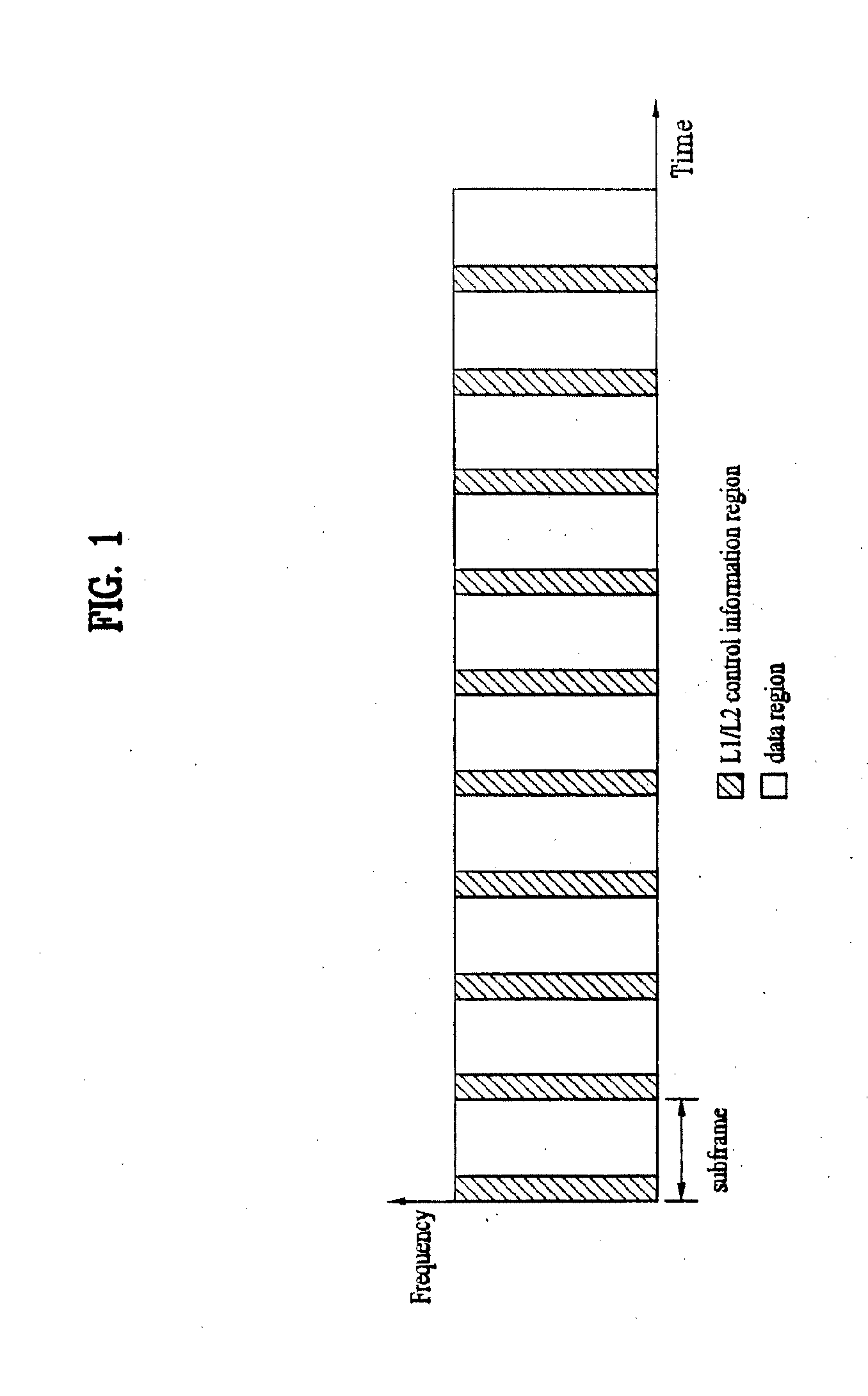Method of Allocating Radio Resources in a Wireless Communication System
- Summary
- Abstract
- Description
- Claims
- Application Information
AI Technical Summary
Benefits of technology
Problems solved by technology
Method used
Image
Examples
Embodiment Construction
[0031]Hereinafter, structures, operations, and other features of the present invention will be understood readily by the preferred embodiments of the present invention, examples of which are illustrated in the accompanying drawings. Embodiments described later are examples in which technical features of the present invention are applied to an E-UMTS (Evolved Universal Mobile Telecommunications System).
[0032]FIG. 3 illustrates a network structure of an E-UMTS. An E-UMTS is a system evolving from the conventional WCDMA UMTS and its basic standardization is currently handled by the 3GPP (3rd Generation Partnership Project). The E-UMTS can also be called an LTE (Long Term Evolution) system.
[0033]Referring to FIG. 3, an E-UTRAN includes base stations (hereinafter, referred to as ‘eNode B’ or ‘eNB’), wherein respective eNBs are connected with each other through X2 interface. Also, each of eNBs is connected with a user equipment (UE) through a radio interface and connected with EPC (Evolve...
PUM
 Login to View More
Login to View More Abstract
Description
Claims
Application Information
 Login to View More
Login to View More - R&D
- Intellectual Property
- Life Sciences
- Materials
- Tech Scout
- Unparalleled Data Quality
- Higher Quality Content
- 60% Fewer Hallucinations
Browse by: Latest US Patents, China's latest patents, Technical Efficacy Thesaurus, Application Domain, Technology Topic, Popular Technical Reports.
© 2025 PatSnap. All rights reserved.Legal|Privacy policy|Modern Slavery Act Transparency Statement|Sitemap|About US| Contact US: help@patsnap.com



